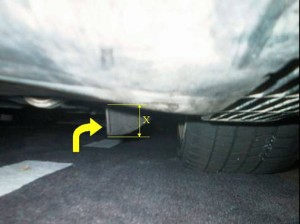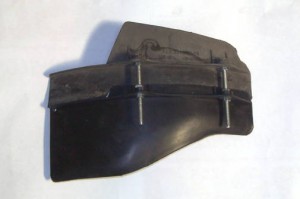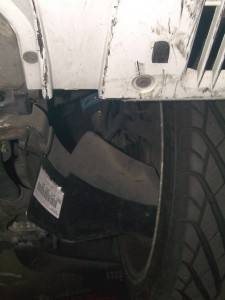
Figure 1. The problems start when we upset the balance of things and lower the front of the car. It’s not uncommon to drop the front of the car down 1½ inches or more from the stock height. While the front bumper goes down, the air scoop actually goes up and becomes mis-aligned, greatly reducing cooling airflow to the front brakes.
I noticed this condition of diminishing brake duct efficiency while I had a very low 993 on my alignment rack. I know that Porsche combated this same problem on the GT3 996’s by adding a metal extension to the bottom of the plastic scoop. I figured that if it was good enough for a GT3 it is certainly good enough for me, and decided to use this same concept on the street cars. The 993 scoops however are not straight like the 996 scoops are. The idea seemed almost too simple. I’ll just attach another scoop to the bottom of the control arm to aid and extend the original scoop attached to the top of the control arm. When the two scoops are attached to the control arm, there is quite a bit of overlapping material. What must be done is to set the scoops up in a jig simply made out of two 65mm or longer 6mm bolts. Once in the jig, the scoops can be marked and cut, to be two separate interlocking pieces of our brake-ducting puzzle, see figure 2.
Figure 2.
The A-arm is 35.4mm thick and this distance must be maintained when cutting the two pieces in the jig. After each piece has been cut, they can be re-installed with two new 6mm x 65mm mounting bolts, see figure 3.
Figure 3.
I have only installed these brake ducts on cars with 18-inch wheels, and have had to do some trimming where the wheel hits the scoop when turning. The smaller the wheel diameter, the greater the risk of contact is. The bottom of the scoop may have a tendency to scrape the ground, especially on cars with smaller diameter tires. If this is indeed the case with your car, a small amount can be trimmed off the bottom of the new scoop extension. Our end result will be a new taller brake duct that will restore the original volume of airflow to the front brakes.
The best part of this whole upgrade is the cost. The plastic 993 brake scoops, part number 993.341.083.00 and 993.341.084.00, only cost $11.38 each. The 964 brake scoops are virtually identical to the 993 scoops, and their update is the same. The 964 scoops, number 964.341.083.01 and 964.341.085.10, can be had for the same $11.38 price tag. This is a bargain at twice the price, not something that can be said for very many Porsche parts these days.Good Luck!

